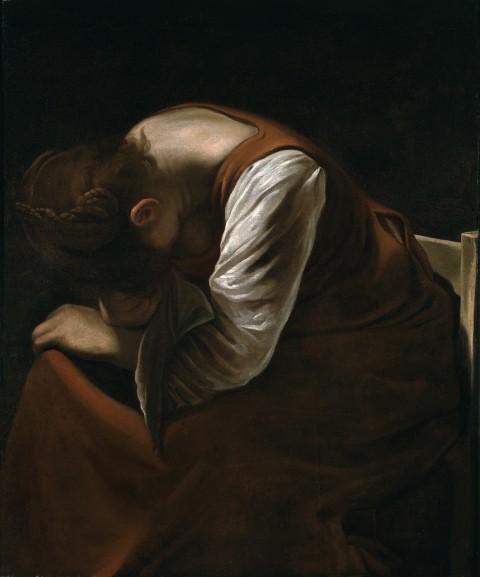The hell of Holy Saturday
Like many mourners on the front lines of the pandemic, Mary’s body is weighed down with grief.

A nurse on the front lines of COVID-19 works on the precipice between death and life. Looking around, she does not have the support she needs. No ventilators. No protective gear. Afraid of carrying the virus home, she develops new routines of taking off her scrubs, laundering, showering, and pulling on her casual clothes. Surgeries and births are conducted without family members physically present. Final goodbyes are managed over phone lines without the chance to touch. These separations—worst nightmares, some say—are marking this moment and redefining funerals with mourners at a distance. Refrigerated trucks arrive in New York to be used as makeshift morgues, and tent-hospitals are set up in city parks. Likened to dystopian futures, scenes of the pandemic unfold around us.
At the same time, around the world, millions of Christians are observing Holy Saturday. It is a gap day between Good Friday and Easter Sunday. In some Christian traditions, it is simply a day to hide the Easter eggs. But in other traditions, it is a day to witness the long and slow movement from death to life. The day before Easter marks the event of the crucified Christ descending into the depths of hell.
In the Gospel accounts, Holy Saturday’s witness is enacted in the stumbling steps of Mary. Like many mourners on the front lines of the pandemic, her body is weighed down with grief. Her eyes filled with tears, she cannot see clearly. Morning still looks like night. She cannot find his body. Instead she stands alone, arriving at the tomb with the smell of his burial perfume still on her clothes.
In Easter traditions, this biblical witness is often overlooked. The preparation of Easter baskets is already underway. The progression of death to life is so smooth that the uncertainty of Mary’s steps is replaced with sure footing. Resurrection becomes about winning. This is what makes it so easy for some who profess Christian faith to claim a total recovery, overlooking present circumstances. Easter is the secured end no matter what. Jesus, in hell, tramples over death. Keys of the kingdom dangle in his hands.
By contrast, other accounts present him not as a victor but as one whose experience of death is total. Enduring death on the cross, he descends as a dead man into hell. This non-victorious descent sends a different message: there is no reach of human experience that is unexperienced by God. Not even hell. The cross of Good Friday narrates this. But the hell of Holy Saturday confirms it.
The descent into hell has a place in the religious imagination. In the non-triumphant version of Holy Saturday, the divine Son descends and endures what Catholic theologian Hans Urs von Balthasar calls a “second death.” Instead of a place of fire and unending suffering, hell is a place of absolute disconnection. In hell, all ties are severed. The first death was actively witnessed, as the women gathered at the foot of the cross. But witness to this second death is like being in a wilderness without a compass. It is unmarked territory.
Holy Saturday vigils begin at night, with the faint glow of a candle, as witnesses gather around it. They huddle in the dark, taking the postures of the early Jesus followers, like Mary. They do not gather because they can see any transformation. They gather because Jesus taught them they were his hands and feet in the world. When he told them he would die, he promised that they would carry his spirit. They, his survivors, would embody his love in the reaches of hell. The good news is that love survives. The candle’s flame is the flicker of love that cannot be extinguished even in the depths of hell.
The stumbling uncertainty of Mary’s witness may seem like a weak vision of resurrection. Perhaps it seems this way because we have been duped by the winner narratives. The expanses of hell are our near and present realities. Witnesses gather on one end of the phone calling out to their loved ones in the wilderness of the ICU. There is no compass for this wilderness. If Easter faith is worth anything, it claims that love survives. Love survives, without all of its adornments. The miracle of Easter resurrection, coupled with that vision of Holy Saturday, is that witnesses run to the tombs—not because they know. They run because they refuse to be disconnected.





